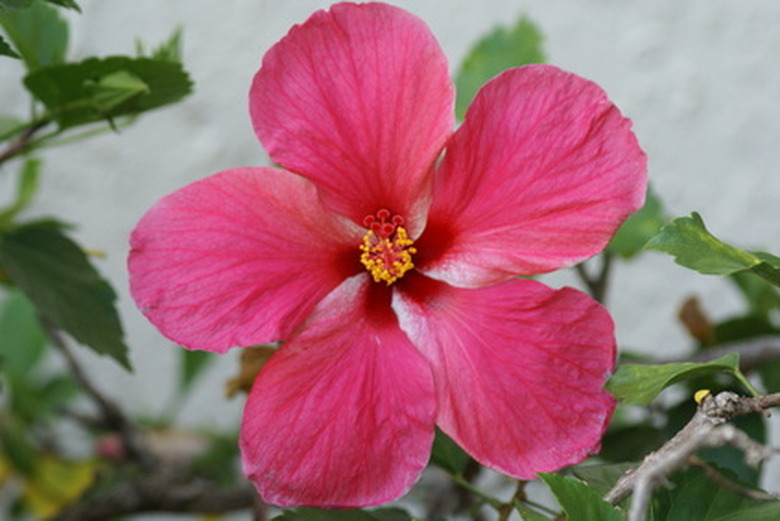Florida Landscape Plants Identification
Florida has over 4,000 species of plants, notes the University of Florida. It also leads the United States in having the most native plants used for home landscape purposes, according to the Inside Track Almanac. Because native plants are already adapted to the environment, they're less prone to disease and pests than nonnative plants. When planning a Florida landscape, it's important to choose the best plants most suited for a particular area.
Types
Hibiscuses are popular Florida shrubs that have one-day flowers that bloom in the morning and then wilt later in the afternoon. They're usually odorless, although some varieties have a slight fragrance. Junipers are evergreens commonly used in Florida landscapes. The foliage of a young juniper is pointed, prickly and sharp, but becomes rather flattened and smoother when mature. They're most suited for Central and North Florida. Gardenias are flowering shrubs often used as screens, borders or hedges in Florida landscapes. These plants look waxy and have oval-shaped leaves with pale yellow flowers that have creamy white or purple mottling.
- Florida has over 4,000 species of plants, notes the University of Florida.
- Hibiscuses are popular Florida shrubs that have one-day flowers that bloom in the morning and then wilt later in the afternoon.
Florida Landscape Trees
The frangipani, also called plumeria, is a short, stocky flowering tree grown throughout tropical areas of Florida. It has leathery oblong-shaped leaves and fragrant, sculpted flowers, notes Floridata. Melaleuca trees grow in the southern portion of the state, says the Smithsonian Marine Station website. This fast-growing evergreen tree has white, paper-like bark and simple leaves that produce an aromatic fragrance when crushed. The Dahoon holly is a small Florida landscape tree, native to the Southeast, that produces fruit called holly berries.
Geography
North Florida generally has freezes and frosts in winter and tends to be too cold for growing tropical plants. Central Florida is somewhat milder than North Florida with seasonal changes less noticeable than in North Florida. Tropical plants do well here, says Florida Gardener. South Florida, which is a sub-tropical zone, sometimes has frosts and freezes so tropical landscaping plants thrive in this area. Tropical Florida rarely has any frosts and freezes.
- The frangipani, also called plumeria, is a short, stocky flowering tree grown throughout tropical areas of Florida.
- The Dahoon holly is a small Florida landscape tree, native to the Southeast, that produces fruit called holly berries.
Considerations
Consider including some type of edging or barrier around a landscaping bed, recommends the Inside Track Almanac. Because Florida rains can fall suddenly without warning, they produce much water in only a brief period. This can cause an unprotected bed to become quickly destroyed. Mulches, topsoils and fertilizers can also be washed away, causing plants to be vulnerable. Borders are available in various sizes, shapes and materials and range in material from plastic edging to decorative bricks.
Warning
Although Florida has a plentiful supply of attractive plants, some can be dangerous when ingested or touched, warns Florida Gardener. Symptoms from toxic plants can range from skin, mouth or eye irritation to breathing problems, stomach pain, diarrhea, and vomiting. In severe cases toxic plants can even be fatal. Common toxic Florida plants include oleanders, yellow alamandas, rosary peas and selloums.
- Consider including some type of edging or barrier around a landscaping bed, recommends the Inside Track Almanac.
- Although Florida has a plentiful supply of attractive plants, some can be dangerous when ingested or touched, warns Florida Gardener.
